#jack godell
Explore tagged Tumblr posts
Note
analyze a Mage of Doom please?
The Mage of Doom [symbols: brain, skull]
The Mage class has its basis in the classic court magician. An example would be Merlin from Arthurian Legend.
The Doom aspect’s main theme is caution. You can find its official description here.
A Mage of Doom is among those who explore energy to influence. This is the “classpect group” they belong to. Members include: the Mage, Seer, Heir, and Witch of Life/Doom. These classes are all opposites or inverses of each other that explore the Life/Doom dichotomy (energy to influence). A description of classpect groupings can be found here.
The Mage of Doom actively knows the Doom aspect. Active classes tell themselves what to do and do so for their own benefit. They are more likely to stand up for themselves, but more likely to be cruel. Mages and Seers possess great knowledge of their aspect and everything it symbolizes. Simplified, the Mage of Doom is motivated by themselves to know caution.
In personality, the Mage of Doom has trouble forgiving their own mistakes and hates confrontation. Personality descriptions can be found here.
Their archetype is the Genius Defender, defined by introspection and caution. Archetypes are explained here.
Their opposite is the Seer of Life, who passively knows growth.
Their inverse is the Heir of Life, who passively manipulates growth.
A classpect or “god tier” is an individual’s best self. All classpects go through a journey from unrealized, to struggle, to realized. When a character is unrealized, they neutrally exist as their inverse. On their struggle, they will wildly flip back and forth between their inverse and true classpect. In their worst moments they will act as their inverse, in their best their true classpect. When realized, they will stabilize as their true classpect. They will still have room to grow, but will become happier, more successful people.
This means that the Mage of Doom begins life motivated by others to manipulate growth. When their struggle arrives and they are at their worst, they will continue this behavior in negative extremes. However, when at their best, they will find purpose in instead knowing caution for themselves. When realized, they will stabilize and continue to know the Doom aspect actively, in a positive way.
They share their archetype with the Knight of Mind, the Defender Genius.
The Mage of Doom would quest on a planet similar to the Land of Thought [Mage] and Doom [Aspect]. An example would be the Land of Dreams and Undead. An explanation of planet naming conventions can be found here.
Two possible gods, or denizens, to reign over their planet would be Hades (God of the Underworld) or Persephone (Dual Goddess of Spring Growth and Decay). Other Doom aspect denizens can be found here.
When the Mage of Doom completes their planet quests and dies on their quest bed, they would rise to ascension on the wings of locusts (symbols of plague). A list of soul animals can be found here.
The characters that I have currently classpected as Mages of Doom are: Sollux Captor from Homestuck [canon example], Connor Guerrin from Dragon Age, Felix Alexius from Dragon Age, Scarecrow from Batman, and Jack Godell from The China Syndrome.
If any of the links not connected to my blog break, the content can be found on my Google Drive.
Official Aspect Descriptions
Personality Descriptions
Aspect Denizens
#mage of doom#god tier analysis#classpecting#ask#my post#homestuck#sollux captor#connor guerrin#felix alexius#jonathan crane#jack godell#dragon age#batman#the china syndrome
11 notes
·
View notes
Text
“Alan Turing: Unlocking the Enigma”
Who is Alan Turing? In this day an age he’s not an obscure character any longer. His face will be on the £50 note. To be honest, I didn’t who he was until the film “The Imitation Game” came out in 2014. I had heard of the Turing test before – I think I first got notice of it on one of the documentaries that come with the special edition box of the movie trilogy “Matrix��, which I highly recommend, if you’re into philosophy – in the context of philosophy regarding AI. My academic education is on arts and sciences, so I didn’t got to have a higher education on mathematics, algebra, logic.

Alan Turing was a British mathematician, more well known by his 1947 paper where he talks about the future of computing and of AI (Turing is considered that father of Artificial Intelligence). But he was also one of the precursors of the computer as we know it today (along with Lord Babbage and Ada Lovelace – daughter of Lord Byron). But he also had a brilliant mind to crack codes, and hence his connection with the British secret services during World War II, where he helped crack the Enigma Code. He remained connected with war time secret service during the Cold War, working on the making of the first British nuclear bomb. By the end of his life he started to become much more interested in biology and its patterns, namely the relation of these with the Fibonacci sequence.
Yes, a unique mind. But, also a somewhat unique person. He was a shy person, and very straightforward, having been connected to a communist movement early in his life. Turing wasn’t bending knees for anyone, even if this would mean his downfall, especially regarding his sexual orientation – a crime in the United Kingdom at his time, and which caused for him to undergo “hormone treatment” and prison. A pardon was officially made in 2013 by the British Parliament, without however changing the law at that time. Turing was persecuted by the intelligence police due to his way of life and how this was seen to compromise national security.
David Boyle’s account comes about in a very small book, that you can read in a few hours, but that’s very good to give a wide view on Turing’s life, work, and impact he had on the world. I bought it in 2015, after watching the film, to start learning more about this decisive person, that led the way in so many areas of knowledge and that, sadly, was treated so ill indeed.
“I end by noting something surely perverse, if constitutionally sound enough, about this bill. It would grant Alan a pardon, when surely all of us would far prefer to receive a pardon from him”.
Lord Quirk, House of Lords in July 2013
The author provides a bibliography which I will leave here, if you are interested in learning more about Alan Turing.
Alan Turing homepage www.turing.org
Briggs, Asa (2011), “Secret Days: Code breaking in Bletchley Park”, London: Frontline
Copeland, Jack (ed.)(2002), “The Essential Turing”, Oxford: Oxford University Press
Diamond, Cora (ed.)(1976), “Wittgenstein’s Lectures on the Foundations of Mathematics, Cambridge 1939), Hassocks: Harvester Press
Elridge, Jim (2013), “Alan Turing, London: Bloomsbury/Real Lives
Goldstein, Rebecca (2005), “Incompleteness: The proof and paradox of Kurt Godel”, New York: Norton
Hodges, Andrew (2000), “Alan Turing: The Enigma”, New York: Walker Books.
Leavitt, David (2006), “The Man Who Knew Too Much: Alan Turing and the investion of the computer”, London:Weidenfeld&Nicolson
McKAy, Sinclair (2010), “The Secret Life of Bletchley Park”, London:Aurum Press
Penrose, Roger (1999), “The Emperer’s New Mind: Concerning computers, minds and the laws of physics”, Oxford: Oxford University Press
Searle, John (1984), “Minds, Brains and Science”, Cambridge MA:Harvard University Press
Teuscher, Christof (Ed.)(2004), “Alan Turing, Life and legacy of a great thinker”, Berlin:Springer.
Turing, Sara (1959), “Alan M. Turing”, Cambridge:Heffer&Co.
“Alan Turing: Unlocking the Enigma” written by David Boyle, The Real Press, UK, 2014ISBN 9781500985370
2 notes
·
View notes
Photo

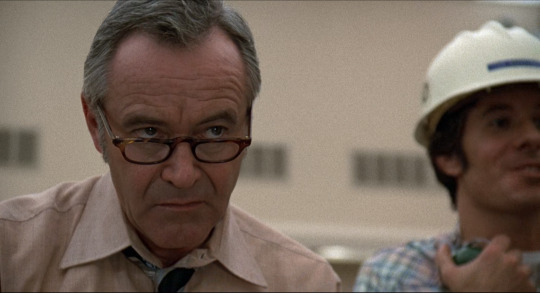
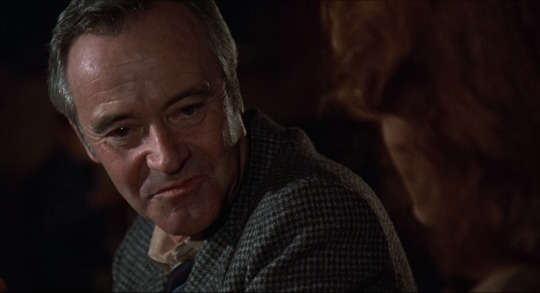
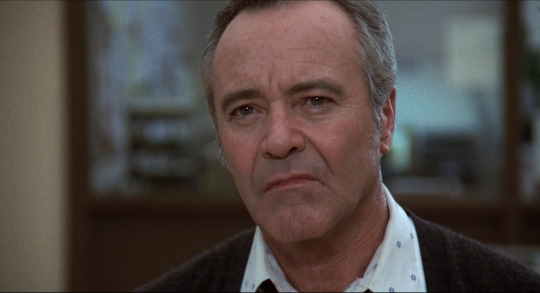
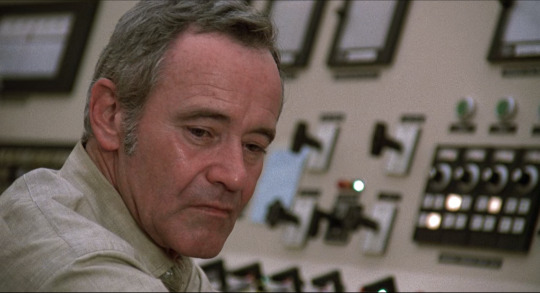
Jack Lemmon as Jack Godell - The China Syndrome (1979)
Golden Globe Award Nominee for Best Actor in a Motion Picture - Drama
22 notes
·
View notes
Note
Top 5 favorite Jack Lemmon roles?
this is hard! jack has so many iconic roles, but in going with my gut:
5. professor fate, the great race
a friend said to me recently that he went a full hour into this movie not realizing that that was jack lemmon! i think it’s quite obvious, personally, but i just love his commitment to The Bit and he manages to play two equally ridiculous roles here.
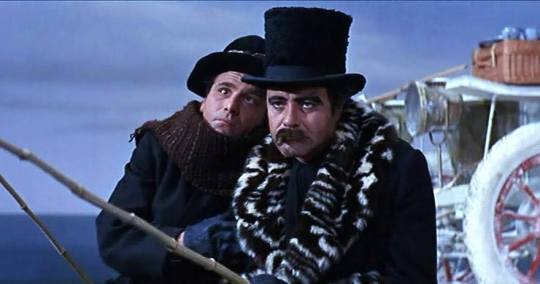
4. joe clay, days of wine and roses
admittedly i haven’t seen this film in years but this shot alone:

3. jerry/daphne, some like it hot
i mean, for a less talented actor this would be THE performance but the fact that i’m putting arguably jack’s best and funniest absolute scene-stealer of a performance at number three tells you everything you need to know about his versatility.

2. jack godell, the china syndrome
i’ve talked about this one before, but i continue to come back to it. so much pain and anguish. we know jack as this really expressive and sometimes over the top comedic actor, but jack godell is a very still and thoughtful man. i just can’t get over that we ever got a performance like this.
it’s very rare that i feel this way about a performance but this is dramatic jack at his very best.

1. c.c. baxter, the apartment
i mean, what can i say about the apartment that hasn’t already been said? it’s a masterpiece, and every time i come back to it i remain convinced and THEN SOME. it’s the perfect marriage of comedic jack and dramatic jack. unlucky in love jack and desperately lonely jack. bumbling idiot jack and smart-enough-to-play-the-game jack. i can’t get over the scene where he talks about his suicide attempt when he was younger.... his performance never feels out of place and he hits all these varying notes perfectly. that he lost the oscar for this is criminal.

30 notes
·
View notes
Text
Classic Environmental Films for Earth Day By Raquel Stecher
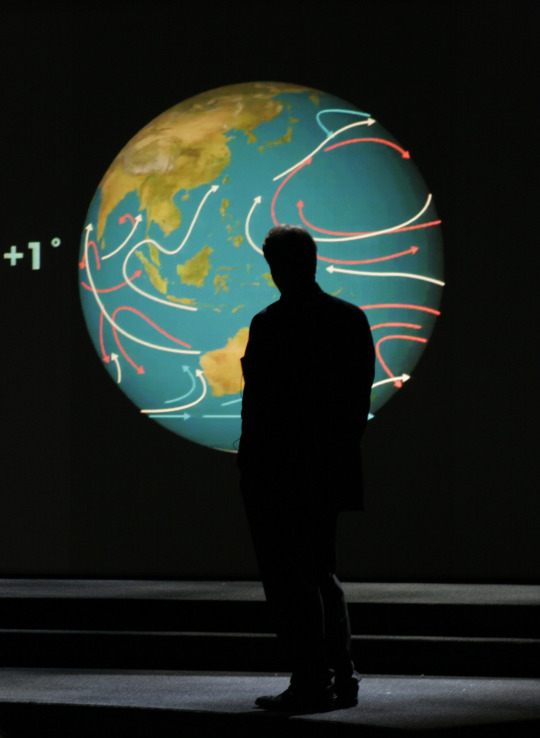
This year marks the 50th anniversary of Earth Day, a global initiative to promote awareness about a variety of environmental issues. Earth Day was founded by U.S. Senator from Wisconsin Gaylord Nelson. He was spurred to action after witnessing the devastating effects the 1969 oil spill in Santa Barbara, California had on the local wildlife. The first Earth Day was held on April 22nd, 1970 and has been celebrated yearly ever since. It began in the U.S. with teach-ins, public demonstrations and protests at schools and universities across the state. By 1990, it had become a global event.
Over the years, films have highlighted a variety of environmental concerns. Director Pare Lorentz made the ground-breaking government films THE PLOW THAT BROKE THE PLAINS (’36) and THE RIVER (’38), which used extensive documentary footage and dramatic music and narration to demonstrate key ecological crises happening in pre-WWII America. Other more contemporary documentaries, like Godfrey Reggio’s visual poem KOYAANISQATSI (’82) and Al Gore’s hard-hitting AN INCONVENIENT TRUTH (’06), made a profound impact on viewers. By the mid-20th century, the conservation movement had come to a tipping point and environmental issues continued to pop up in feature films.
Let’s take a look at some feature films of that time with notable environmental themes.
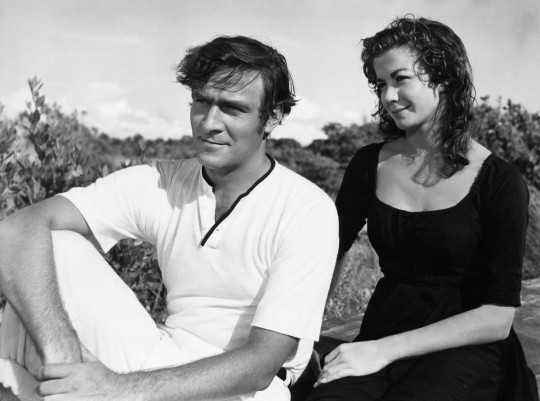
WIND ACROSS THE EVERGLADES (’58) — After the success of ON THE WATERFRONT (’54), Budd Schulberg started a production company with his brother Stuart and their first project was the Warner Bros. film WIND ACROSS THE EVERGLADES. The film stars Burl Ives as Cottonmouth, a rare bird poacher who rules the Everglades with an iron fist. His nemesis is Walt Murdock (Christopher Plummer), an ornithologist who is determined to save the endangered birds. The film was shot on location in the Everglades of South Florida, the first production of its kind according to the proclamation in the film’s trailer. The story touches upon the challenges environmentalists face in doing their jobs, often putting their lives at risk to do so.

NO BLADE OF GRASS (’70) —When actor Cornel Wilde started working behind the camera as a director, he took on some interesting projects including THE NAKED PREY (’65) and the environmental disaster film NO BLADE OF GRASS. The year 1970 proved to be important in the environmental movement, and Wilde’s film explored the chaos that ensues during an ecological catastrophe. A viral pandemic sweeps the globe killing plant life, including grass, wheat and rice. The rapidly shrinking food supply causes widespread famine and political unrest in the form of bombings, rioting, looting and mass killings. Wilde’s film was based on John Christopher’s novel The Death of Grass published in 1956. In addition to directing, Wilde also produced and co-wrote the screenplay under the pseudonym Jefferson Pascal.

SILENT RUNNING (’72) —If you take the impending ecological disaster in NO BLADE OF GRASS and take it one step further, you get the post-apocalyptic science fiction movie SILENT RUNNING. Directed by Douglas Trumbull, the film takes place in the distant future when all of Earth’s flora has gone extinct and humans are now living in space. It stars Bruce Dern as Freeman Lowell, a botanist working on a spaceship, a Noah’s Ark of sorts, where he tends to the last remaining specimens of plants. While Freeman’s shipmates are happy with their new lives, Freeman is determined that his work can bring back life on Earth. When asked why he wants to go back to the now-abandoned Earth, he responds with the timely response “because it’s not too late to change it.”

SOYLENT GREEN (’73) — Set in the year 2022, SOYLENT GREEN imagines a world where pollution and over population have destroyed the majority of food supply leaving little for consumption. The rich still get access to fresh food and clean water while the poor are rationed food in the form of Soylent (soy and lentil) wafers. Directed by Richard Fleischer, the film stars Charlton Heston as a police detective who, while investigating an assassination, uncovers more than he bargained for. While the famous line of the film spoils the ending, it’s still a fascinating and engaging film that delivers a stark warning about the dangers of over-consumption.
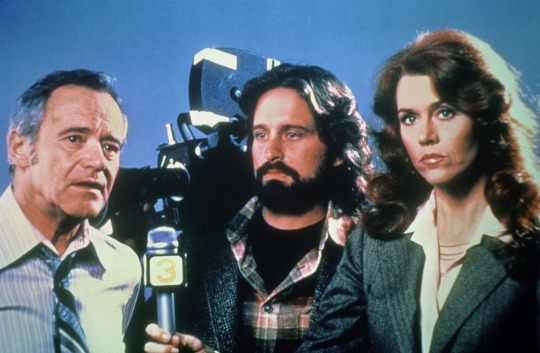
THE CHINA SYNDROME (’79) — Growing concerns for the impact nuclear power was having on the environment made THE CHINA SYNDROME incredibly timely. The film stars Jane Fonda and Michael Douglas as a news reporter and cameraman investigating a cover-up at a nuclear power plant. They work with whistleblower Jack Godell (Jack Lemmon), who is increasingly concerned about an impending disaster. THE CHINA SYNDROME debuted on March 16th, 1979 and on March 28th, just 12 days later, a nuclear meltdown occurred on Three Mile Island. Director James Bridges and star/producer Michael Douglas knew they had a timely subject on their hands but couldn’t imagine how timely it would actually be.
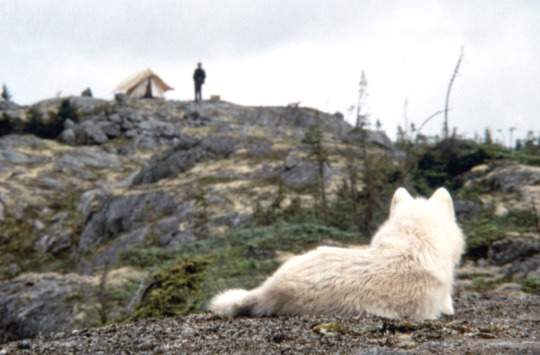
NEVER CRY WOLF (’83) — Myths about wolves have plagued the species for centuries. They were falsely accused of many things, including being a danger to humans and decimating populations of caribou. It was the latter that government biologist Farley Mowat researched, and his autobiography Never Cry Wolf, published in 1963, became a landmark publication that changed the public narrative about wolves. Twenty years later, Disney would bring Mowat’s story to the big screen with director Carroll Ballard’s film NEVER CRY WOLF, starring Charles Martin Smith as Mowat (AKA Tyler). The film features on-location shooting in Alaska and plentiful footage of wolves (albeit domesticated ones). It captures not only the struggle Mowat faced in researching this elusive species in an unforgiving landscape but also the delicate balance of nature and how harmful human activity disrupts that balance.
106 notes
·
View notes
Text
despite its failings, uq holder gets one A on my report card, and that’s for canonizing Eva’s role as Evil Step-mom.
just imagine what a comedy bit Negi’s wedding would become. the ceremony is beginning, and those in the crowd who aren’t in on the details of it are contemplating who’s going to walk the groom down the aisle, seeing as he has no mother and his sister is already standing at the front as a bridesmaid. The moment arrives, everyone turns around to see, and it’s The Dark Evangel, in all her terrifying, expensive clothe, with like 100 bats carrying the back of her dress, standing tall and proud and so, so smug as she walks the savior of the universe down the aisle. Nobody can handle it. The pianist forgets to play. Governor Godel is weeping, Jack and Thea have gone into hysterical laughter, and every guest who wasn’t a part of Ala Alba runs off screaming, never to return.
#negima#uq holder#evangeline ak mcdowell#also poor chisame#imagine ur mother in law being some asshole you went to middle school with
91 notes
·
View notes
Photo




Jack Lemmon as Jack Godell / The China Syndrome (1977)
Academy Award Nominated as Best Actor
169 notes
·
View notes
Photo

JOGO CIENTÍFICO! Logo mais veremos quem é quem no JOGO DAS CIENTISTAS organizado pela @bibibailas <3 Aproveitando essa ideia, vamos tentar fazer (ou alguém faz e divulgamos na página) o jogo científico dos/as cientistas NEGROS #Repost @verve.cientifica • • • • • @verve.cientifica A lista segue abaixo. * Linha 1 Ada King Adolfo Lutz Alan Turing Albert Einstein Albert Sabin Alessandro Volta Alexander Fleming Alexander von Humboldt Alfred Nobel Alfred Russel Wallace Alfred Wegener * Linha 2 Andreas Vesalius Antoine Lavoisier Aristoteles Arquimedes Artur Ávila Avicena Bertrand Russell Carl Sagan Carl Friedrich Gauss Carlos Chagas Carlos Lineu * Linha 3 Caroline Herschel Cesar Lattes Charles Babbage Charles Darwin Charles Lyell Claude Shannon Dmitri Medeleiev Edward Jenner Edward O. Wilson Edwin Hubble Enrico Fermi * Linha 4 Ernest Rutherford Erwin Schröendiger Euclides Évariste Galois Francis Bacon Francis Collins Francis Crick Fred Hoyle Galeno Galileu Galilei Georg Cantor * Linha 5 George Gamow Georges Cuvier Georges Louis Leclerc Gottfried Leibniz Graziela Maciel Barroso Gregor Mendel Hans Bethe Harold Kroto Hendrik Lorentz Henry Cavendish Henry Poincare * Linha 6 Hipócrates Humphry Davy Isaac Newton J. Robert Oppenheimer J. Craig Venter Jack Kilby James Clerk Maxwell James Watson James Watt Jane Goodall Jayme Tiomno * Linha 7 Jean d'Alembert Johanna Döbereiner Johannes Kepler John Nash John James Audubon John Ray John von Neumann Jons Berzelius Jose Leite Lopes Katherine Johnson Kurt Godel * Linha 8 Leonardo da Vinci Leonhard Euler Linus Pauling Louis Pasteur Ludwig Boltzmann Luigi Galvani Marie Curie Mario Schenberg Max Planck Michael Faraday Niels Bohr * Linha 9 Nikola Tesla Nicolau Copérnico Norman Borlaug Oswaldo Cruz Pierre-Simon Laplace Pierre Curie Pitágoras Plínio Rachel Carson René Descartes Richard Feynman * Linha 10 Richard Smalley Robert Hooke Robert Boyle Robert Koch Rosalind Franklin Sadi Carnot Sophie Germain Srivanasa Ramanujan Stephen Hawking Stephen Jay Gould Steven Pinker * Linha 11 Temple Grandin Tales de Mileto Tim Berners Lee Tycho Brahe Vital Brazil Werner Heisenberg William Bateson William Harvey William Herschel William Thomson https://www.instagram.com/p/B_96_6AnGTV/?igshid=1ty1xr3j2atir
0 notes
Text
REMEMBERING THE GREAT OCTOBER REVOLUTION & ITS ENDURING LEGACY
By Greg Godels
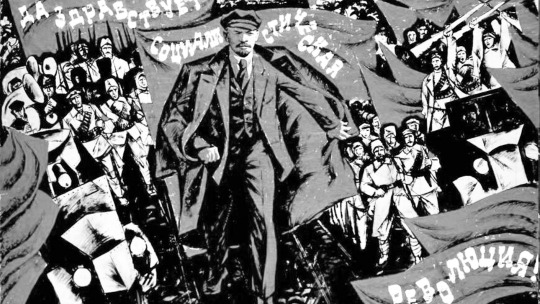
[V.I. Lenin. Detail from Bolshevik poster. (Public Domain)]
Despite the demise of the Soviet Union, it has left us a rich legacy. Thanks to its more than seven-decade existence, we have many notable achievements to celebrate, and many signposts to a just, peaceful world free of capitalism.
***
“TO THE CITIZENS OF RUSSIA!
The Provisional Government is deposed. The State Power has passed into the hands of the organ of the Petrograd Soviet of Workers’ and Peasants’ Deputies, the Military Revolutionary Committee, which stands at the head of the Petrograd proletariat and garrison.
The cause for which the people were fighting: immediate proposal of a democratic peace, abolition of landlord property-rights over the land, labour control over production, creation of a Soviet government-- that cause is securely achieved.
LONG LIVE THE REVOLUTION OF WORKMEN, SOLDIERS AND PEASANTS!”
Military Revolutionary Committee Petrograd Soviet of Workers’ and Soldiers’ Deputies
Proclamation (Nov-7-1917)
(from Ten Days That Shook the World, John Reed)
THE Bolshevik Revolution-- the Revolution of “workmen, soldiers, and peasants” was the signal event of the twentieth century. Over the last century, no other event shaped the fate of the peoples of the world as decisively as the rebellion of the peoples of Russia and the aftermath of that rebellion.
Literally for centuries, working people-- those creating society’s wealth-- longed for a time when they could share the wealth as well as the work with their overlords, with those appropriating the results of their labor. From ancient times, the creators of wealth resisted, even rebelled, against their masters. The slave revolts against Roman domination, the peasant risings of the Jacqueries and the cohorts of John Ball and Jack Straw, the middle European rebellions of Hus and Müntzer, the radical stance of the Levellers and the Diggers in the English Revolution, and the frequent actions of workers in the nineteenth century culminating in the heroic, but short-lived Paris Commune of 1871, were all historical landmarks in the never-ending yearning of working people to control both their destiny and the fruits of their labor.
Sympathetic to the cause of poor and working people, a host of writers wrote of a world free of the bondage of worker to master. Early Christians like Jerome and Pelagius and the anonymous author of On Riches understood that if you “get rid of the rich you will find no poor.”
Medieval preachers like William Wycliffe discovered, when written Christian texts became available, that the message of Jesus was less one of fire and brimstone and more one of social justice. Visionaries, like Thomas More, foresaw a time when property would no longer be held privately, and where equality would reign.
“The Bolshevik Revolution-- the Revolution of ‘workmen, soldiers, and peasants’ was the signal event of the twentieth century.”
The industrial era brought a flurry of writings addressing the ravenous appetite of the owners of capital for greater profits and the consequent desperate impoverishment of the workers. Early socialist writers like Saint-Simon, Charles Fourier, Étienne Cabet, and Robert Owen took up the cause of exploited workers and called for a new society based on egalitarian principles. And of course, the nineteenth century spawned the great collaboration of Karl Marx and Frederick Engels, the two giants who constructed a comprehensive science of society and rationally established the demise of capitalism and its replacement with socialism.
So, the Revolution in Russia was not a historic anomaly; it was not the accident, the rare unpredictable event that its detractors would like us to believe. Instead, it was the culmination of a long process, an evolution in the thought and actions of working people to bury – once and for all – the exploitation of labour and its crushing weight on millions of people in the distant past.
It was an audacious move. On November 7, 1917, a “raw, chill day,” in the words of author John Reed, the members of the Petrograd Soviet took the step that would set them on an unprecedented, perilous course. They were embarking on an experiment unlike any in history and one that all of the world’s great powers were determined to quell.
The people of the Russian empire had suffered indignities for centuries. The non-Russian people of the vast empire were under the harsh boot of a tyrannical royal family that lived in splendor with its entourage, courtiers and other hangers-on. The majority of the people were tied to the land under conditions of semi-feudalism. The Russian peasant existed, little more than existed. Peasant life was bleak, poverty-ridden, and oppressive, held in place by the Russian Church and the Czar’s whip.
Capitalism had gained momentum in Russia over the previous several decades before World War I, but lagged behind the other great powers in many areas. Nonetheless, the workers were restive. The “dress rehearsal” for the 1917 revolution – the failed 1905 revolution – brought 440,000 workers into the streets-- on strike-- in the first month!
The outbreak of war in 1914 only brought more despair and discontent. With corrupt, sycophantic generals, inferior equipment and weapons, the workers and peasants of the Empire were bled dry by a war that had little to do with their lives, except for universal tragedy.
It was in this fertile ground of discontent that the seeds of rebellion grew. But it took a political organization and fearless leaders to nourish their growth towards a new and decidedly different society. From a host of political parties representing every social class or stratum, only the Bolshevik Party, the party of Russia’s Communists, representing the most politically advanced workers, properly gauged the revolutionary potential of the moment. Only Vladimir Lenin and a few of his comrades fully envisioned breaking with the old and constructing something entirely new— a socialist society, free of exploitation and devoted to peace and social harmony. As Rosa Luxemburg acknowledged in 1918:
The party of Lenin was thus the only one in Russia which grasped the true interest of the revolution in that first period. It was the element that drove the revolution forward, and, thus it was the only party which really carried on a socialist policy.
It is this which makes clear, too, why it was that the Bolsheviks, though they were at the beginning of the revolution a persecuted, slandered and hunted minority attacked on all sides, arrived within the shortest time to head of the revolution.
Of course, November 7, 1917 was a watershed, an unforgettable date signaling the fall of an old government and the establishment of a new one. But revolution is a process and not a mere event. New institutions, new government bodies, and new rules must be constructed. New people must be trained and organized to lead a government built on the ruins of the old. Food, shelter, jobs, and security must be found for Russia’s 130,000,000 people.
But before those tasks could be vigorously pursued, the new Soviet government had to contend with counter-revolutionary armies bent on restoring the old order. In addition, the new-born Soviet Union was invaded by forces from 14 different countries bent on smothering the baby in its cradle, to paraphrase the reactionary Winston Churchill.
It should come as no surprise that the capitalist powers sought to destroy the Soviet Union. As Stepan Georgevitch Lianozov, known as the “Russian Rockefeller,” explained to John Reed on October 15, 1917:
“Revolution,” he said, “is a sickness. Sooner or later the foreign powers must intervene here-- as one would intervene to cure a sick child, and teach it how to walk. Of course, it would be more or less improper, but the nations must realize the danger of Bolshevism in their own countries-- such contagious ideas as ‘proletarian dictatorship,’ and ‘world social revolution’...
This hatred and belligerence towards the Soviet Union continues to this day. It is easy to underestimate how violent anti-Communism was a persisting backdrop throughout the following decades of the Soviet Union’s existence.
“...the people of the Soviet Union achieved an enormous feat by 1940: industrial production was 750% of that of 1913! A war-torn, backward country had become an industrial powerhouse in a span of 19 years...”
With the defeat of the counter-revolutionaries in 1921, the Soviet Union began the daunting, unprecedented task of building socialism. Since the beginning of the World War, there had been 14,500,000 deaths and the Soviet economy was reduced to one-seventh of its prewar output. Nevertheless, the Soviet people embarked on an ambitious program to not only rebuild the country, but construct an economy with the power to repel the many hostile capitalist countries threatening its existence. This had to be accomplished at breakneck speed, requiring great sacrifices and enormous energy.
Meeting the challenge, the people of the Soviet Union achieved an enormous feat by 1940: industrial production was 750% of that of 1913! A war-torn, backward country had become an industrial powerhouse in a span of 19 years, a triumph enabling the first socialist country to resist and defeat Nazi Germany and its allies assembled into the greatest invasion force in history.
While achieving an unprecedented growth in production, the Soviet Union was empowering its working class with free, universal education, vast new housing construction, full employment, free healthcare, cultural immersion, the promotion of minority national identities, and new institutions of self-governance. The first steps were taken towards building the workers’ state that millions of oppressed, exploited working people had only imagined.
Mikhail Kalinin, Chairman of the Supreme Soviet of the Soviet Union put it succinctly on May Day, 1938:
“We are not a land flowing with milk and honey. We are a workers’ state. Our state started from a beggarly existence. Perhaps we are making many mistakes. This is possible. Perhaps, sometimes we are not doing what we ought to do; this is also possible. But I would like to tell you one thing-- we are building a proletarian world.”
The successes of socialist construction were many and impressive; the effort and sacrifices of the Soviet people were heroic; but many mistakes were made as well. An enterprise as daunting as the complete reconstruction of society on a new social, political, and economic basis could not but endure mistakes, lost opportunities, failings, and accidents. The fervent, unwavering defense and preservation of the gains could not but invite excesses. Such is the history of all epochal change. But socialist morality and socialist legality must concede that in the throes of these great changes, tragic, avoidable errors were made that cost far too many lives and brought harm to far too many honest participants in the socialist project.
At the same time, it must be noted that the enemies of socialism-- the capitalists, the lapdog politicians, the security services, the academic hirelings, and the media mudslingers-- are united in unswervingly demonizing the history of the Soviet Union and presenting, often in a caricatured way, only the failings of the Soviet Communists. Since the revolution, distortions, innuendos, and outright lies have fed the great anti-Communist ideological machine. Ruling classes understand that a real, historically viable example of socialism imparts confidence and vision to the working-class movements of every country. They do everything to quash any positive example. That is why a defense of the achievements of the Soviet Union is vital to any movement for radical change, any movement for socialism. It is an illusion to believe that radical change can be won while siding with capitalism in wholesale rejecting the Soviet legacy.
The Second World War left the Soviet Union devastated. Nearly 27 million Soviet citizens gave their lives in the victory over fascism. Much of the heavily populated, industrial sector of the country was destroyed by the Nazi invasion. And within a few years, the United States and its capitalist allies initiated a resource-draining, peace-threatening Cold War that multiplied the hardships of reconstruction.
But the Soviet people again sacrificed to rebuild the country while also defending the homeland of socialism against NATO and the other military pacts organized to surround and threaten the Soviet Union and its socialist allies.
A little more than ten years after the end of the war, the Soviet Union stunned the world with its technological advancement by launching the first artificial satellite.
Despite the fact that the Soviet Union continued to advance economically, politically, and culturally in the following decades, anti-socialist forces were growing in size and influence, particularly with the development of a second, private economy parallel with the socialist economy. Keeran and Kenny’s invaluable book, Socialism Betrayed, contains estimates as high as 20% for the portion of Soviet economic activity conducted illegally and semi-legally. They argue that this was the material basis for the demise of the Soviet Union:
“The Soviet counterrevolution occurred because the policies of Gorbachev set in motion a process by which social groups with a material and ideological stake in private property and the free market eventually overpowered and displaced the formerly dominant socialist economic relations, that is, the planned, publicly owned, ‘first’ economy.”
It was this betrayal of the bold Soviet experiment that temporarily delayed the struggle to once-and-for-all emancipate the world from the rapacious grip of capitalism. But that struggle will continue with the lessons learned from the Soviet legacy.
***
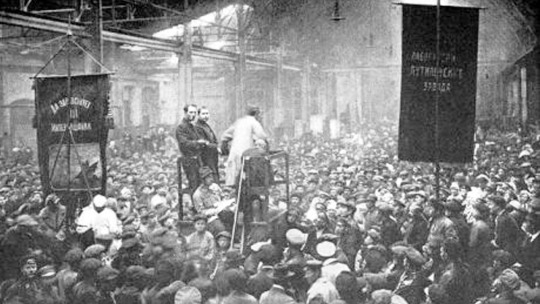
[A mass meeting in the Putilov Works in Petrograd during the 1917 Russian Revolution. (Public Domain)]
DESPITE the demise of the Soviet Union, it has left us a rich legacy. Thanks to its more than seven-decade existence, we have many notable achievements to celebrate, many signposts to a just, peaceful world free of capitalism:
We know now that a society dedicated to ending labour exploitation, a society free of capitalists is possible.
The Soviet experience shows that a country can grow and prosper without capitalists. During the Great Depression, when the capitalist world was on the brink of collapse, the Soviet Union attained extraordinary growth. While millions were idled, and impoverished by capitalism, the socialist system enjoyed full employment and rising living standards. When capitalist managers and financial parasites were leaping to their death in desperation, Soviet workers and peasants were learning the skills to run the rapidly growing and newly created socialist enterprises.
The Soviet experience taught that a modern socialist society could function well, guided by workers and peasants and without professional strata of managers and politicians from the idle class, without consultants and marketers, without advertisers and sales hucksters, without financial managers and insurance sellers.
In a mature socialist society, the creation and stimulation of false needs are eliminated with the effort and resources redirected to satisfying real needs. Brand duplication and model changes are dictated by popular demand and scientific improvement and not by marketing schemes and costly advertisements. The capitalist profit-driven “services” of finance, insurance, and real estate are handled through efficient, fair, and transparent government agencies without the distorting, corrupting influence of systematic personal gain.
We have seen that public ownership can replace private ownership and competitive markets and it can be rational, efficient, creative, and motivated.
Soviet Communists expropriated the appropriators. The owners of the productive assets who exploited the labour force were “invited” to join that labour force; their assets were given to the people collectively. While capitalist apologists argued that public ownership without markets would inevitably result in the inefficient and irrational allocation and usage of resources, the Soviet Union proved that a modern economy servicing the third or fourth largest population in the world can grow at unprecedented rates while providing its people with an equitable and ever growing standard of living. By those standards, it was certainly more rational than its capitalist counterparts.
Contrary to naysayers, the Soviet people proved more than able to create their own way forward. Denied the technological innovations developed by their capitalist counterparts, Soviet scientists and engineers nevertheless modernized the socialist economic engine apace with its adversaries, many times advancing well beyond the levels achieved in the West.
The Soviet experience showed that a planned economy could match, often dramatically exceed, the performance of a competitive market economy. The fetishism of markets that is a pillar of capitalist ideology denies that human forethought and calculation can produce better results than the anarchy and waste (the so-called “creative destruction”) of competitive markets. The apologists for capitalism ignore the vast misuse of productive assets in product duplication, the enormous waste of resources produced by mindless model changes, and the crude manipulation enacted by the promotional and sales industries. Capitalist “efficiency” reaches its zenith with zombie-like consumerism.
If planners were today armed with the fruits of the modern computational revolutions, they could easily conquer the complexities of the most sophisticated, complex economic interactions and demonstrate the superiority of planning over market uncertainties. Unfortunately, Soviet planners never had the technical means to do so before the demise of the Soviet Union.
The Soviet century demonstrated the possibility of a consistent commitment to peace, national liberation, and internationalism.
Before the Soviet Union, no government embraced and codified the doctrine of non-interference in the affairs of other nations, a doctrine sorely missing in the international relations of our time. Lenin elevated the right of national self-determination to the highest tier of human rights and fought for its basis in the molding of sovereign nations into the USSR.
The Soviet Union saw the right of self-determination as the touchstone of its peace policy. In an era of predatory imperialism, the fight for national liberation and independence is indissolubly tied to the fight for peace. There can be no enduring peace with imperialism. The fight for peace is the fight against imperialism. A lasting peace is the absence of imperialism in all of its forms. At the same time, the Soviet Union sought to eliminate the threat of global, catastrophic war between differing social systems.
This doctrine formed the basis for the Soviet concept of internationalism-- the duty of Communists and all progressive forces to support and aid the victims of imperial design and aggression. No moment better demonstrated the Soviet commitment to internationalism than its mobilization in the 1930s behind the young Spanish Republic in the face of counterrevolution and fascist aggression. An entire generation of revolutionaries drew inspiration and understanding from that selfless initiative.
Soviet material aid to anti-colonial, national liberation struggles was a consistent feature of nearly the entire history of the USSR, a vital fact of history ignored by many “left” critics of the Soviet Union. Soviet solidarity was a critical factor in struggles in Asia, Africa, the Middle East, and Latin America. The map of the world would be vastly different without the Soviet commitment to independence and social justice.
Those who are determined to bury the Soviet accomplishments would like us to forget the victory over fascism in World War II and the liberation of Eastern Europe. They wish to erase any memory of the role of the Soviet Union in leading the fight to eliminate colonialism in the post-war world, especially in the construction of the United Nations Charter. They willfully forget the generous and unconditional aid to emerging nations at a time when the Soviet Union was itself rebuilding from unimaginable devastation.
***
ANY twenty-first century project bent on escaping the clutches of modern capitalism that fails to objectively draw on the Soviet experience is doomed to abject failure. It’s a fool’s errand to strive for an answer to the ruthless reign of state-monopoly capitalism without heeding the lessons-- both good and bad-- from the building of the first workers’ state.
Yet today, twenty-six years after the demise of the Soviet Union, far too many have succumbed to the easy lure of capitalist triumphalism-- the idea that revolutionary socialism, decisive rule and ownership by working people, and a rational, humane economy is beyond reach. Far too many surrender to pessimism and the notion that only modest reforms are possible.
A recent article on the popular website Counterpunch illustrates the commonplace, easy dismissal of the Soviet experience:
Revolution, dictatorship of the proletariat, the one party state, centralized state planning and much else is dead. It was tried. It didn’t work. It was an historical/practical shambles. Furthermore, the Marxist heresies of Leninism, Stalinism, and Maoism were outrageous and ultimately deadly caricatures of Marxism. They did everything they could to earn themselves the name “Red Fascism”.
Quite simply, what does not serve to enhance humanity should, at any time, be unceremoniously jettisoned and that goes for much of past socialist doctrine too.
(Rethinking Socialism in the Twenty-First Century, Dan Corjescu, August 30, 2017)
Sadly, this cavalier rejection of the entire Marxist-Leninist tradition and the scoffing at the dedication and sacrifices of millions of militant workers is far too prevalent among today’s activists. Of course, it is born from ignorance, an ignorance produced by a massive capitalist ideological campaign that followed European socialism’s fall. It reflects the loss of the unswerving determination maintained by generations of workers to remove the unbearable weight of grinding exploitation and create a better world. It reflects a jaded vision that cannot see further than the return to a mythical lost, more humane capitalist past. It too easily accepts the inevitability of the capitalist slogan “There is no alternative.”
By denying the legacy of the Bolshevik Revolution, would-be leftists are left with faith in a bankrupt social democracy. In Corjescu’s words:
“I think once we give up premature fantasies of Capitalism’s imminent demise (after all it has survived for approximately six centuries!) we can fruitfully pick up the work of the reformist Social Democratic parties of the late Nineteenth, early Twentieth centuries…”
Of course, this is the reasoning behind the reinvention of social democracy in Europe. The collapse of support for the traditional social democratic parties has spawned the birthing of new ones, (SYRIZA, PODEMOS, Five Star Movement, La France Insoumise, etc). But with no radical alternative challenging it, capitalism is not inclined to grant the concessions to social democracy that it did during the 1950s and 1960s when socialism presented an existential challenge.
The future of a left alternative to capitalism, the future of a genuine movement towards socialism lies in building organizations-- Communist organizations-- that defend the legacy of the Bolshevik Revolution and draw the lessons that the Bolshevik legacy offers.
***
Greg Godels lives in Pittsburgh. He often writes under the pen-name Zoltan Zigedy.
1 note
·
View note
Text
Sensual Vogue 2019-08
Wild Side (Thomas Godel Remix Extended) - Tyra Love Me Back (Shift K3Y Remix) - Tove Stryke Heat (Kokiri Club Remix) - Kelly Clarkson Forever Young (Jack Wins Mix) - Amy Grace Party (Tobtok Remix) - Sonia Stein 5 Dollars (twoDB Extended) - Christine And The Queens No Time (Dani Grigu Edit Bootleg) - Carine Not With Me (Day After Remix) - Senti This Is How We Party (R3hab Mix) - Icona Pop Light On (Adam Turner Extended Mix) - Maggie Rogers Wanna Know (Drama Remix) - Rika Nightmares (Yung Pretender Remix) - Caitlyn Scarlett Thank U, Next (Umbree Remix) - Ariana Grande Take Me Higher (Dark Intensity V.I.P Remix) - Ilos WTP (BAUT Club Mix) - Teyana Taylor 7 Rings (Barry Harris Club Mix) - Ariana Grande I Remember (Hector Fonseca & Esteban Lopez Remix) - Betty Who Party For One (Hector Fonseca, Thiago Dukky & Blacklow Remix) - Carly Rae Jepsen One Life (Dan De Leon & Anthony Griego Massive Mix) - Elexis Ansley Bassa Sababa (Mike Cruz Club Mix) - Netta Nothing Breaks Like A Heart (Martin Solveig Extended Remix) - Miley Cyrus Turn Me Up (Dave Matthias No Rap Alternate Remix) - Breanna Rubio
0 notes
Photo

JOGO CIENTÍFICO! Logo mais veremos quem é quem no JOGO DAS CIENTISTAS organizado pela @bibibailas <3 Aproveitando essa ideia, vamos tentar fazer (ou alguém faz e divulgamos na página) o jogo científico dos/as cientistas NEGROS #Repost @verve.cientifica • • • • • @verve.cientifica A lista segue abaixo. * Linha 1 Ada King Adolfo Lutz Alan Turing Albert Einstein Albert Sabin Alessandro Volta Alexander Fleming Alexander von Humboldt Alfred Nobel Alfred Russel Wallace Alfred Wegener * Linha 2 Andreas Vesalius Antoine Lavoisier Aristoteles Arquimedes Artur Ávila Avicena Bertrand Russell Carl Sagan Carl Friedrich Gauss Carlos Chagas Carlos Lineu * Linha 3 Caroline Herschel Cesar Lattes Charles Babbage Charles Darwin Charles Lyell Claude Shannon Dmitri Medeleiev Edward Jenner Edward O. Wilson Edwin Hubble Enrico Fermi * Linha 4 Ernest Rutherford Erwin Schröendiger Euclides Évariste Galois Francis Bacon Francis Collins Francis Crick Fred Hoyle Galeno Galileu Galilei Georg Cantor * Linha 5 George Gamow Georges Cuvier Georges Louis Leclerc Gottfried Leibniz Graziela Maciel Barroso Gregor Mendel Hans Bethe Harold Kroto Hendrik Lorentz Henry Cavendish Henry Poincare * Linha 6 Hipócrates Humphry Davy Isaac Newton J. Robert Oppenheimer J. Craig Venter Jack Kilby James Clerk Maxwell James Watson James Watt Jane Goodall Jayme Tiomno * Linha 7 Jean d'Alembert Johanna Döbereiner Johannes Kepler John Nash John James Audubon John Ray John von Neumann Jons Berzelius Jose Leite Lopes Katherine Johnson Kurt Godel * Linha 8 Leonardo da Vinci Leonhard Euler Linus Pauling Louis Pasteur Ludwig Boltzmann Luigi Galvani Marie Curie Mario Schenberg Max Planck Michael Faraday Niels Bohr * Linha 9 Nikola Tesla Nicolau Copérnico Norman Borlaug Oswaldo Cruz Pierre-Simon Laplace Pierre Curie Pitágoras Plínio Rachel Carson René Descartes Richard Feynman * Linha 10 Richard Smalley Robert Hooke Robert Boyle Robert Koch Rosalind Franklin Sadi Carnot Sophie Germain Srivanasa Ramanujan Stephen Hawking Stephen Jay Gould Steven Pinker * Linha 11 Temple Grandin Tales de Mileto Tim Berners Lee Tycho Brahe Vital Brazil Werner Heisenberg William Bateson William Harvey William Herschel William Thomson https://www.instagram.com/p/B_96qNlnoQo/?igshid=1696n34p2hcdc
0 notes